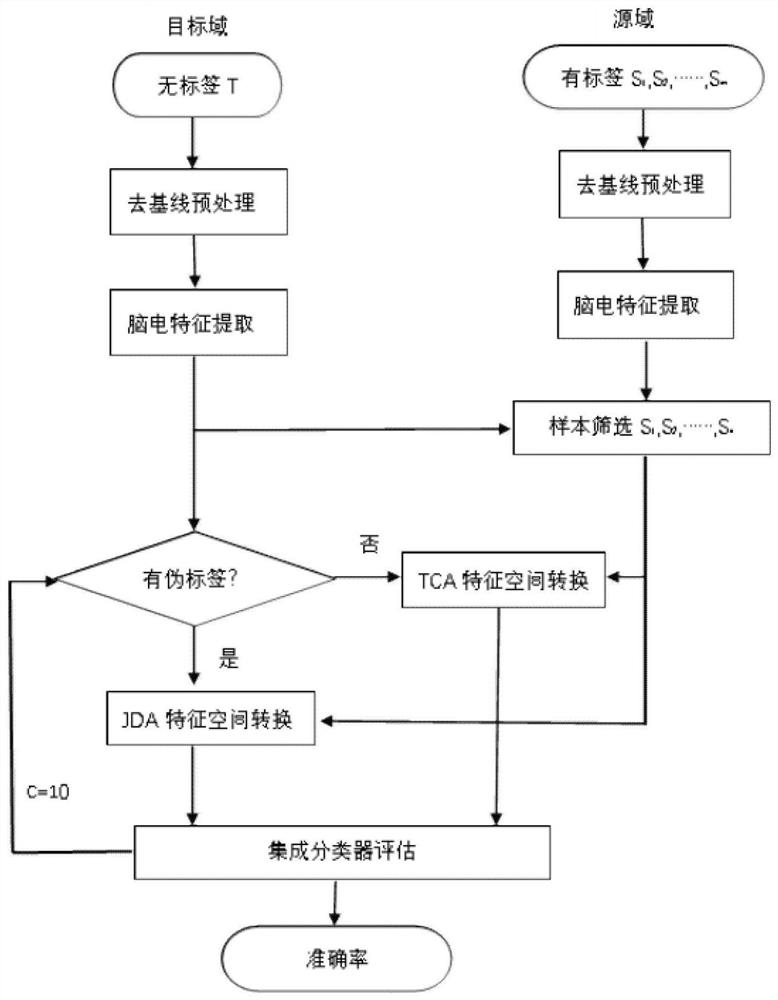Brain wave emotion classification method, system and device, medium and terminal
A classification method and brain wave technology, applied in the field of machine learning and intelligent human-computer interaction, can solve the problems of data waste from different sources, inability to adapt to new individuals, etc., and achieve the effects of improving accuracy, shortening convergence time, and optimizing classification effects
- Summary
- Abstract
- Description
- Claims
- Application Information
AI Technical Summary
Problems solved by technology
Method used
Image
Examples
Embodiment 1
[0067] The invention discloses a brainwave emotion classification method based on transfer learning. The method includes the following steps: firstly, preprocessing the brainwave data without baseline; Get the first-order difference value of the time domain signal, and use it as the EEG feature; then use the Euclidean distance as the standard, select the sample closer to the target domain from the source domain as the actual training sample; finally, use JDA (Transfer Component Analysis ), TCA (Joint Distribution Adaptation) maps the training set and test set samples to a feature space that is more similar to the two, and uses an integrated classifier for classification evaluation, and loops to achieve better results. The present invention is not only sample-based transfer learning, but also feature-based transfer learning. Euclidean distance is used for sample screening, and the original JDA algorithm is improved. TCA feature space conversion is added in the first cycle, and t...
Embodiment 2
[0086] Aiming at the existing problems, the present invention provides a brain wave emotion classification method based on transfer learning, such as figure 2 shown, including the following steps:
[0087] Step S1: For the labeled source domain data and unlabeled target domain data, the EEG data in a calm state is recorded as the baseline, while the EEG data under video stimulation is recorded as the fluctuation data, and the fluctuation data is subtracted from the baseline to obtain Relative changes in brain electricity when people have emotions. Compared with the original data, the difference can better reflect the EEG characteristics of emotion, and it is used as the input data of the experiment.
[0088] Step S2: EEG feature extraction: 5s EEG data is used as a sample, and then the difference between two consecutive adjacent items in each sample is calculated, and the input time domain data is converted into a first-order difference value, which is used as an EEG feature...
PUM
 Login to View More
Login to View More Abstract
Description
Claims
Application Information
 Login to View More
Login to View More - R&D
- Intellectual Property
- Life Sciences
- Materials
- Tech Scout
- Unparalleled Data Quality
- Higher Quality Content
- 60% Fewer Hallucinations
Browse by: Latest US Patents, China's latest patents, Technical Efficacy Thesaurus, Application Domain, Technology Topic, Popular Technical Reports.
© 2025 PatSnap. All rights reserved.Legal|Privacy policy|Modern Slavery Act Transparency Statement|Sitemap|About US| Contact US: help@patsnap.com



